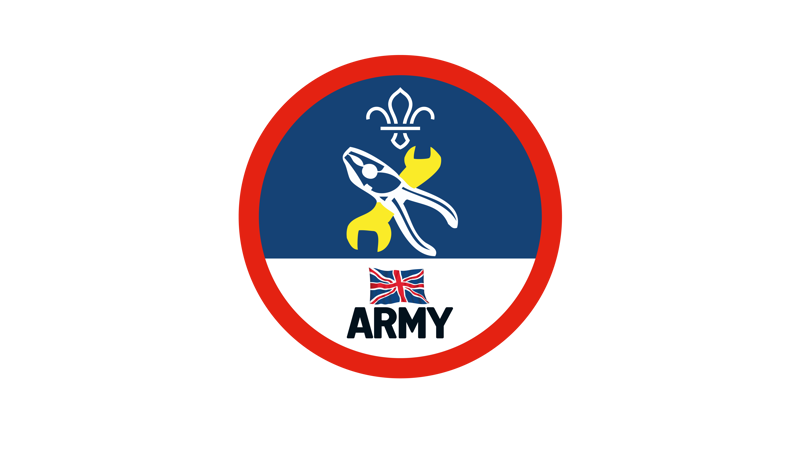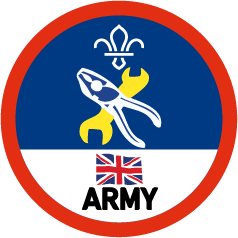
Lightbulb moment
You’ll need
- Replacement bulbs
- Screwdrivers
- Sockets
- Access to a motorcycle (with the correct manual)
There are lots of different lights on a vehicle for lots of different reasons; they help us see where we are going, let other people know we are there and also what we might be doing next like braking or turning. Keeping these bulbs working is a legal requirement. Leaving a broken bulb in place can also put electrical strain on other bulbs in the system causing them to break too which will cost more money to replace.
Before you begin
- This activity’s part of a series of short activities in the Scouts Mechanic Activity Badge.
- Decide how you’ll run these activities. You could run a mechanics activity day with a few vehicles, so small groups can try different tasks on different vehicles at the same time. You could also run the activities as short bases during a meeting (while other activities take place).
- Decide who’ll run and supervise this activity. All of the practical activities for the Mechanic Badge should be run and supervised by a qualified mechanic (or someone with enough knowledge gained through experience).
Guidelines
- Before working on any electronics in the vehicle you may need to disconnect the battery. You should follow your vehicle manufacturer’s guidelines to do this safely and correctly.
- Find the bulb housing and remove it following the manufacturer’s guidelines. This may need to be unscrewed or unclipped and may require removing multiple different types of fastenings.
- Find the bulb that needs replacing and remove and rubber or plastic covers so you can get to it. You may also need to release a retaining clip or twist the bulb to release it.
- Remove the wiring plug from the bulb and replace the bulb with a new one being careful not to handle the glass part of the bulb as this can damage it. Make sure you buy the right replacement bulb following the manufacturer’s guidelines.
- Follow the previous steps in reverse to make sure everything is put back in the right place and in the right order.
- Have another group member help you check that the new bulb is working properly by watching it while you turn it on and off.
Reflection
Did you know? The longest lasting lightbulb is at a fire station in California and has been running for at least 117 years.
Looking after and repairing your vehicle is an amazing skill to have. It will help keep you and others safe, boost your independence, save you money and help support the environment by using up few resources and new parts.
Safety
All activities must be safely managed. You must complete a thorough risk assessment and take appropriate steps to reduce risk. Use the safety checklist to help you plan and risk assess your activity. Always get approval for the activity, and have suitable supervision and an InTouch process.
- Chemicals
This task involves the use of potentially harmful fluids or chemicals. Make sure you follow all relevant safety guidance. Make sure you dispose of them appropriately too, in line with safety guidance.
- Manufacturer’s guidelines
All vehicles will be different so always follow the manufacturer’s guidelines.
- PPE
Before completing this activity make sure you have suitable personal protective equipment (PPE). This could include eye or ear protection, gloves, and anything else you need to protect yourself. You’ll know what you need as a result of completing the risk assessment for the activity.
- Vehicle readiness
Before completing this activity, make sure that the engine’s fully cooled. The vehicle should be parked on flat, stable ground with the parking brake applied.
- Outdoor activities
You must have permission to use the location. Always check the weather forecast, and inform parents and carers of any change in venue.
Group members must always be supervised and guided by someone competent and experienced. Group members with more knowledge and experience should be encouraged to complete more of the task themselves while being supervised. Group members with less knowledge and experience may need more hands-on help when completing the activities.
The person supervising and guiding the activity can help out with parts anyone finds tricky including reading instructions, lifting or moving heavy objects, or doing the smaller or more fiddly tasks.
All Scout activities should be inclusive and accessible.
This activity’s just one area of vehicle maintenance and repair. Encourage anyone who’s interested to complete the other activities in the Scouts Mechanic Activity Badge.
Involve young people in the decision about how to do the Scouts Mechanic Activity Badge (if they want to do it at all) – would they rather do the activities separately over different meetings or as part of an activity day? Just because this activity needs supervision (and you can’t alter the content or safety guidance), doesn’t mean young people can’t have a say.
